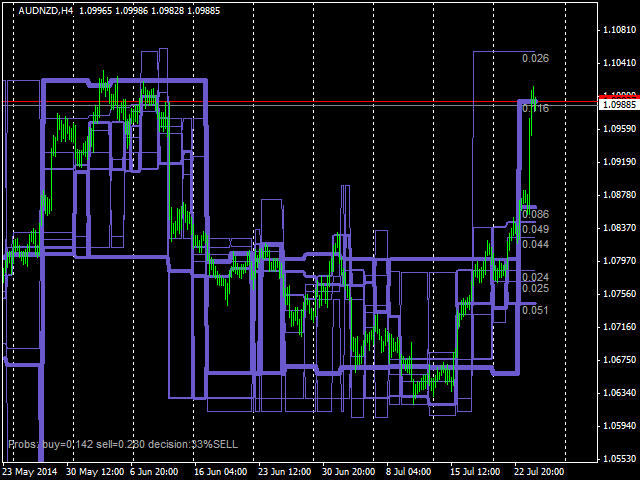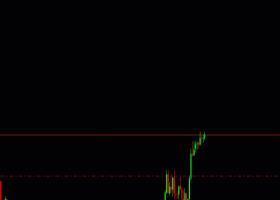"Getting back was only the beginning"
This is the second post in the series about future prediction on the markets. In the
first one, two indicators - PriceProbability and PriceProbabilities - were described. Today I continue investigation of the subject from another point of view.
One of the most impressive indicators for quotes analysis is the well-known ZigZag. While reading forums on trading, everyone often sees something like this: "if I only knew those ZigZag extremums beforehand..." Naturaly, this sounds like a science fiction, because we all know that ZigZag shows all its beauty only on the history, and draws itself with a great lag. Can we do something and solve this problem? Probably we can - using statistics.
ZigZag does actually extract essential price movements in the past, and split them into 2 plain phases: up-trend and down-trend, which replace each other constantly. Given a long enough history of quotes we can calculate statistics for ZigZag edges and built some
probability density functions. For example, they could be for a probability to observe an edge of a specific size and a
conditional probability to observe an edge of specific size provided that previous (opposite direction) trend gained some other known size. The latter one has a lot in common with a classical approach using Fibonacci levels and retracements, but unlike to the predefined Fibonacci coefficients, the statistics gathered from real time series may discover non-standard yet statistically significant levels. In other words, such statistics are more flexible and sensitive.
For those of you who think this all is a little bit complicated, I can tell that it's already implemented and available for everyday use, for everyone.
The first tool I'm going to mention is
ZigZagProbability indicator. It gathers statistics of ZigZag and predicts future yet unfinished leg, based on overall probability of edge sizes and conditional probability of a next edge size after a previous completed edge. As we talk about probabilities there is a bunch of price levels where the next edge will most likely form new extremum. And the indicator displays up to 8 most probable locations. It's presented on the following screenshot, where ZigZag is shown for reference only.
It's important how the levels "jump" at some bars from one location to another. These are the moments when a ZigZag edge becomes completed and a new unfinished edge begins to form. But by virtue of the statistics, the indicator displays new price levels just at that moments - usually long before the new edge will end up. You can see on the screenshot how price action after - that is to the right side of - every "jump point" is attracted by already formed levels.
You can trade these future levels either by market orders in direction of prevailing bearing, or place pending orders on both or a single side of the levels.
All looks good except for a small but important nuance. ZigZag is a parametric indicator and its readings are heavily dependent from specified input values. If you change ZigZag range, you'll get new statistics and new predictions. We need to handle this somehow.
It's basically a superposition of several ZigZagProbability indicators with different ranges automatically calculated from a symbol's historical volatility.
This time you may notice that overall picture of predicted levels changes smoothly and looks more consistent. The levels can form an alternative channel or envelope, which one can trade using conventional strategies for range trading. For those who like grids the levels give good suggestions on where to place the orders of the grid. The indicator provides several usefull parameters to tweak its behaviour and customize it for a specific symbol. You may find further details on the
dedicated page of the indicator.
But you know this is not yet a full story about prediction of the future.




